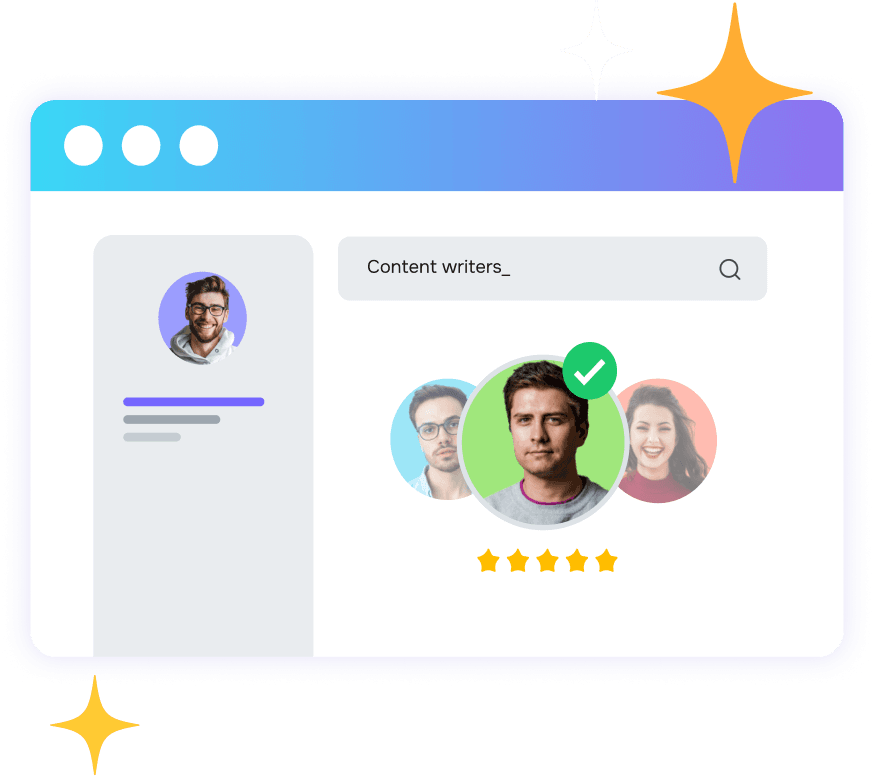Paul Campillo
Head of Marketing at Rep.AI
Conversations on Branding, Tech, and Commerce with Paul Campillo
In this exciting conversation, we talk with Paul Campillo, the person behind 'The Fringe,' a popular newsletter that combines branding and technology for business. We discuss how to create good content and make intelligent strategies, comparing it to the development of podcasts. Campillo tells us about his plans to turn his newsletter into a podcast and how he's thinking about different ways to do it. He also talks about the challenges of keeping a unique perspective while trying to achieve business goals.
We also discuss the future of making content and how artificial intelligence plays a big part. Shreejith Nair, Content Marketing Consultant at Pepper Content, talks to Paul Campillo, Head of Marketing at Rep.AI, and shares a lot of valuable insights.
1. Can you please tell us about your journey?
I'm Paul, currently leading marketing at Rep AI, a startup revolutionizing e-commerce with personalized shopping experiences. My journey spans diverse roles - from social work aiding ex-inmates transitions to becoming a brand director at Typeform and a content/copywriting expert. I started blogging as a hobby in 2011, leading to a game-changing encounter with Typeform via a unique job application. My unconventional background caught the CEO's eye, propelling me into Typeform as a blog leader, eventually becoming Director of Brand. I'm excited to steer Rep AI's marketing, always up for fresh challenges.
2. Can you discuss the evolution of the content marketing industry from its early days to today?
The world of content marketing has evolved significantly. Blogger and Typepad were early blogging pioneers, and Twitter introduced micro-blogging. The transformation began with the Content Marketing Institute and HubSpot, championing inbound marketing and creating a new category. Today, companies are not just content creators but full-fledged media companies. Creators hold immense digital influence.
AI-driven generative tools are reshaping the scene, especially in the conversational internet era. SEO faces change with evolving search engines. While AI brings possibilities, the essence of content remains, serving marketing, education, inspiration, or entertainment. The path ahead promises an intriguing journey in the digital world.
"Sticking to something that feels good to you but at the same time does well for the business is a very delicate balance."
3. How can startups with small teams create a strong SEO strategy amid the shift towards organic growth and changing content trends?
My SEO strategy leans heavily on a brand-first approach. Identifying what sets a brand apart is key. Starting with the product highlights unique selling points. Content plays a vital role in expanding the brand's reach. Beyond the product, it provides insights and delves into the broader category, encouraging new perspectives.
I use a mix of tactical and inspirational content to initiate discussions and monitor trends. Newsletters have gained prominence, with platforms like CK and Beehiiv becoming noteworthy. Diverse content formats, including videos, transcriptions, blogs, and newsletters, are crucial for a successful SEO strategy. Newsletters, in particular, shine due to their unique perspectives and industry insights.
4. According to you, for startups, is it better to focus on the CEO's personal brand or build the brand story around the company itself?
I believe in founder branding for a strong brand strategy. Founders, like superheroes, understand their company's origins and core mission. But brand marketing encompasses more than just content. Everything a company does reflects its brand. For a robust brand strategy, I endorse category ownership. At Rep, we aim to lead in 'conversational shopping.' By owning a category, the brand identity naturally aligns.
5. Amidst the sea of thought leadership content, how can one craft original pieces that genuinely connect with the audience and stand out from the noise?
When it comes to the role of content, I have a pretty simple perspective: it's all about empowering your users to become total pros. Effective thought leadership plays a crucial role in achieving that goal. Sometimes, it's not about the nitty-gritty tactics; it's about providing clarity on the big picture—clarifying the vision, direction, or a significant trend. If it accomplishes that, it's doing its job just right.
But let's be real, not everything that claims to be thought leadership truly qualifies. Genuine thought leadership should be mind-bending, taking the conversation in an entirely new direction. I'm a firm believer in uniqueness and differentiation. It shouldn't sound like marketing jargon but should resonate with everyone, making sense to all.
Now, speaking of categories, when you're trying to own one, it's essentially about shaping how your customers perceive it. It's less about what you call it and more about what clicks with them. If everyone's labeling you as a chatbot, that's what you are in their minds. Creating a new category isn't a walk in the park; it requires extensive education. Many advise against it, but the rewards can be monumental if done right.
"Content of any kind and media of any kind should help people be more badass. If it's not doing that, if it's not serving that purpose, then it's not doing its job."
6. With the rise of short attention spans and video content, how does video fit into your content strategy, and what's your view on video vs. written content?
The "goldfish attention span" notion is somewhat exaggerated. Attention span depends on content appeal and personal interest. Video content is on the rise but often originates from written material. Both have their place—I use newsletters for deep thoughts and YouTube for education or entertainment. Sometimes I'm focused, other times casual.
As consumers, we seek unique and valuable perspectives. Content creation, be it written or video, should highlight what sets us apart and offer original takes. Avoid generic "top 10" lists. Experiment with prompts and find your unique path to desired results. That's my ChatGPT perspective in a nutshell.
7. Shifting to podcasts, how did you start, what's the value you see, and what's your podcasting plan?
My content strategy revolves around my newsletter, "The Fringe." It's all about combining brands and technology to create exceptional commerce experiences. Like any evolving content piece, especially one with a regular cadence, it's a journey of discovery. Much like a podcaster's first episode differing from the hundredth, it's about finding that unique angle and what truly resonates with your audience.
I'm in the process of transforming my newsletter into a podcast, although it might be a bit early for that transition. The format is crucial—interviews, roundtable discussions, or solo reflections. Each offers a distinct way for the audience to connect with the content. Another consideration is the podcast's length, whether it's quick five-minute tips or in-depth, lengthy conversations. I'm still exploring these aspects, but one thing remains clear: I want to stay authentic to my perspective while balancing business objectives. It's a delicate equilibrium that keeps content fresh and valuable.
8. How do you create content at your organization? Is it in-house, freelance, or remote-driven? And where do you see the future of content generation moving—more in-house or a shift towards freelancers?
It's hard to predict the future of content generation because it depends on various factors like the organization's stage and philosophy. Startups often rely on in-house content generation but may use freelancers as they grow. The structure hinges on your belief in a unique perspective. If you believe in it strongly and can find the right talent, in-house makes sense to maintain uniqueness.
When it comes to the process, AI tools are changing the game. However, it's essential to view AI as augmented intelligence, not artificial, as it should enhance content, not replace it entirely. The scene is shifting, especially with Google's focus on more conversational search. Content should aim to make users more skilled or informed. Ranking alone won't cut it if the content isn't helpful or inspiring action.
At Typeform, our content succeeded because it focused on thought leadership and challenging the status quo. People discussed and shared our articles, which is more rewarding than high traffic. The goal should be to create content that sparks conversations and changes perspectives.
"It's important to know who you are and have that self-awareness, and then to bring that out and really leverage that strength."
9. What are the key challenges content marketers face today, and what advice do you have for newcomers in the field?
Authenticity in content creation is crucial. Many content creators often become fast followers instead of thought leaders in their field. It's essential to tap into your unique perspective and ideas. In a world where imitation is common, staying true to your identity sets you apart. While AI can assist with research, it's crucial to understand the information deeply and explain it in simple terms. Authenticity means respecting your unique perspective and talents. It's easy to get caught up in others' opinions, but remember, you can achieve leadership too by harnessing your inner strengths.
To be a successful content creator, consider how your content can benefit others. Focus on helping them progress toward their goals. Ultimately, your content should guide them on a transformative journey, making them better and different from where they started.

